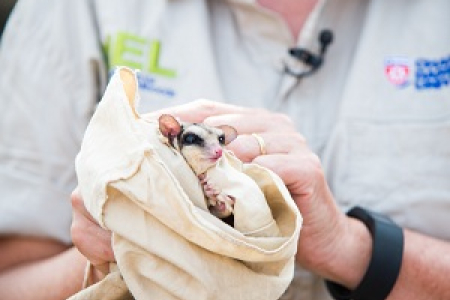Glider study soars into Darwin bushland
Charles Darwin University researchers are scouring Darwin and Palmerston bushland to discover more about one of Northern Australia’s most mysterious mammals.
The presence and status of northern gliders in these areas are being assessed through methods including trapping, monitoring and radio-tracking these tree-dwelling creatures.
Pro Vice-Chancellor of the Faculty of Engineering, Health, Science and the Environment Professor Sue Carthew said the findings would contribute to a wider study exploring whether the northern glider was a new species of gliding marsupial.
The northern glider is classified as a sugar glider (Petaurus breviceps ariel), but the researchers suspect its DNA and physical characteristics are more closely aligned to a squirrel glider (Petaurus norfolcensis).
“There has been a dramatic decline in the abundance and diversity of small mammals in Northern Australia over the past 20 years,” Professor Carthew said.
“Now is a more important time than ever to conduct conservation research on the charismatic gliding marsupials of the Top End.”
The team recently secured a City of Darwin grant to establish monitoring sites at East Point Nature Reserve, Holmes Jungle Reserve, and Charles Darwin National Park. Sites have also been established at Palmerston, Bladin Point, Kakadu National Park and the Katherine region.
Professor Carthew said the study sites were extended to green areas in Darwin and Palmerston because some glider species in Australia were known to dwell in bushland surrounding urban areas.
She said it was important to determine how these species were faring in the areas of the Top End.
CDU Research Institute for the Environment and Livelihoods research associate Dr Teigan Cremona said the study would help identify and conserve areas around Darwin that supported glider populations.
Dr Cremona said radio-tracking and population monitoring would help identify major threats faced by gliders, such as feral cats, which could then be used to target conservation efforts.
She said this work would also uncover important information about how animals make use of these habitats.
